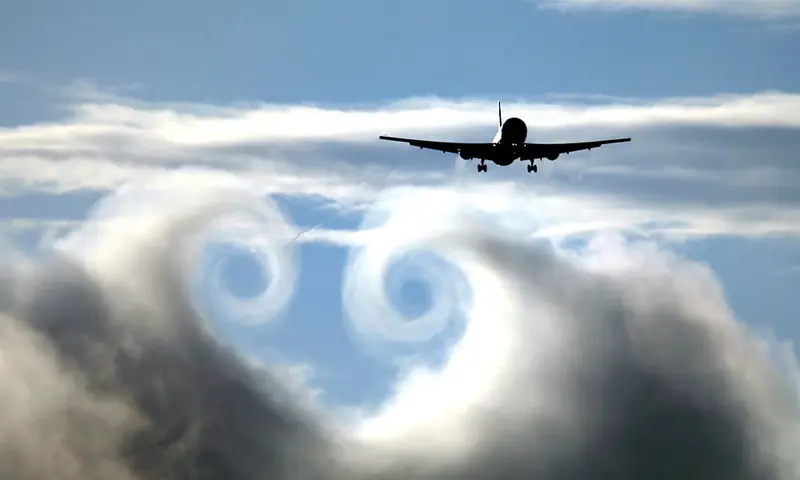
Pilots and passengers, brace yourselves: climate change is set to make air travel an even tougher challenge. Researchers assert that turbulence will become more intense.
Professors Lance Leslie and Milton Speer from the University of Technology Sydney (Australia) have identified a link between abnormal wind gusts and global warming.
Using machine learning techniques, the scientists discovered that heat and humidity are the “key ingredients” behind dangerous wind gusts known as downdrafts. These downdrafts can cause severe chaotic movement of air masses (especially during takeoff and landing), plunging aircraft into turbulence.
“Our study is one of the first to detail the increased climate risk for airlines associated with thunderstorm microbursts, particularly during takeoff and landing,” noted Professors Leslie and Speer.

What Did the Scientists Discover?
Until now, most turbulence research has focused on dangers that threaten aircraft at high altitudes, such as clear air turbulence and jet stream instability.
However, there has been less research dedicated to the hazards of turbulence caused by downdrafts at lower altitudes. In their new study, published in the journal Climate, the scientists turned to machine learning to identify the climatic factors underlying this phenomenon.
The results showed that increased temperature and humidity due to the climate crisis provoke “troubles for aircraft.”
“Global warming increases the amount of water vapor in the lower layers of the atmosphere. This is because a 1°C rise in temperature allows the atmosphere to hold 7 percent more water vapor. The additional moisture typically comes from warmer seas. It evaporates from the water’s surface and fuels clouds. And the increased heat and water vapor lead to stronger thunderstorms,” the scientists explained.
According to the researchers, the main issue thunderstorms pose for aircraft is the risk of dangerous rapid changes in wind speed and direction at low altitudes. Specifically, small downdrafts just a few kilometers wide, known as “microbursts,” can cause abrupt shifts in wind speed and direction.
For unfortunate airline passengers, this translates into turbulence that shakes the aircraft in all directions, as reported by the Daily Mail. It’s no surprise that smaller planes are particularly susceptible to turbulence at low altitudes.
“Small aircraft with 4-50 passenger seats are more vulnerable to excessively strong wind gusts caused by thunderstorm microbursts,” the experts added.
As global temperatures continue to rise, microbursts will intensify.
Professors Leslie and Speer urged airlines and flight safety authorities to be “more vigilant during takeoff and landing in the context of global warming.”
Will There Be More Reports of Injuries Due to Turbulence?
Passenger planes have long been recognized as one of the safest modes of transportation. However, in recent months, there have been several reports of aircraft encountering severe turbulence.
In March, five passengers on a United Express flight were injured due to extreme turbulence, prompting the aircraft to make an emergency landing in Texas.
And in June, nine people were injured after a Ryanair flight hit an area of severe turbulence, leading its pilots to make an unscheduled landing.
